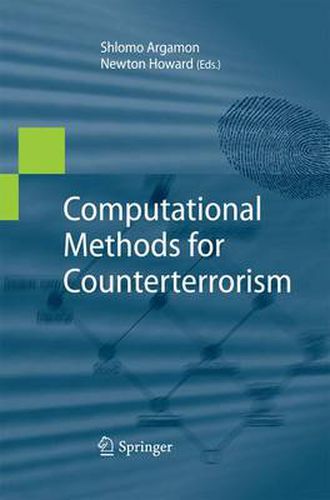Readings Newsletter
Become a Readings Member to make your shopping experience even easier.
Sign in or sign up for free!
You’re not far away from qualifying for FREE standard shipping within Australia
You’ve qualified for FREE standard shipping within Australia
The cart is loading…






This title is printed to order. This book may have been self-published. If so, we cannot guarantee the quality of the content. In the main most books will have gone through the editing process however some may not. We therefore suggest that you be aware of this before ordering this book. If in doubt check either the author or publisher’s details as we are unable to accept any returns unless they are faulty. Please contact us if you have any questions.
Modern terrorist networks pose an unprecedented threat to international security. The question of how to neutralize that threat is complicated radically by their fluid, non-hierarchical structures, religious and ideological motivations, and predominantly non-territorial objectives. Governments and militaries are crafting new policies and doctrines to combat terror, but they desperately need new technologies to make these efforts effective.
This book collects a wide range of the most current computational research that addresses critical issues for countering terrorism, including:
Finding, summarizing, and evaluating relevant information from large and changing data stores;
Simulating and predicting enemy acts and outcomes; and
Producing actionable intelligence by finding meaningful patterns hidden in huge amounts of noisy data.
The book’s four sections describe current research on discovering relevant information buried in vast amounts of unstructured data; extracting meaningful information from digitized documents in multiple languages; analyzing graphs and networks to shed light on adversaries’ goals and intentions; and developing software systems that enable analysts to model, simulate, and predict the effects of real-world conflicts.
The research described in this book is invaluable reading for governmental decision-makers designing new policies to counter terrorist threats, for members of the military, intelligence, and law enforcement communities devising counterterrorism strategies, and for researchers developing more effective methods for knowledge discovery in complicated and diverse datasets.
$9.00 standard shipping within Australia
FREE standard shipping within Australia for orders over $100.00
Express & International shipping calculated at checkout
This title is printed to order. This book may have been self-published. If so, we cannot guarantee the quality of the content. In the main most books will have gone through the editing process however some may not. We therefore suggest that you be aware of this before ordering this book. If in doubt check either the author or publisher’s details as we are unable to accept any returns unless they are faulty. Please contact us if you have any questions.
Modern terrorist networks pose an unprecedented threat to international security. The question of how to neutralize that threat is complicated radically by their fluid, non-hierarchical structures, religious and ideological motivations, and predominantly non-territorial objectives. Governments and militaries are crafting new policies and doctrines to combat terror, but they desperately need new technologies to make these efforts effective.
This book collects a wide range of the most current computational research that addresses critical issues for countering terrorism, including:
Finding, summarizing, and evaluating relevant information from large and changing data stores;
Simulating and predicting enemy acts and outcomes; and
Producing actionable intelligence by finding meaningful patterns hidden in huge amounts of noisy data.
The book’s four sections describe current research on discovering relevant information buried in vast amounts of unstructured data; extracting meaningful information from digitized documents in multiple languages; analyzing graphs and networks to shed light on adversaries’ goals and intentions; and developing software systems that enable analysts to model, simulate, and predict the effects of real-world conflicts.
The research described in this book is invaluable reading for governmental decision-makers designing new policies to counter terrorist threats, for members of the military, intelligence, and law enforcement communities devising counterterrorism strategies, and for researchers developing more effective methods for knowledge discovery in complicated and diverse datasets.